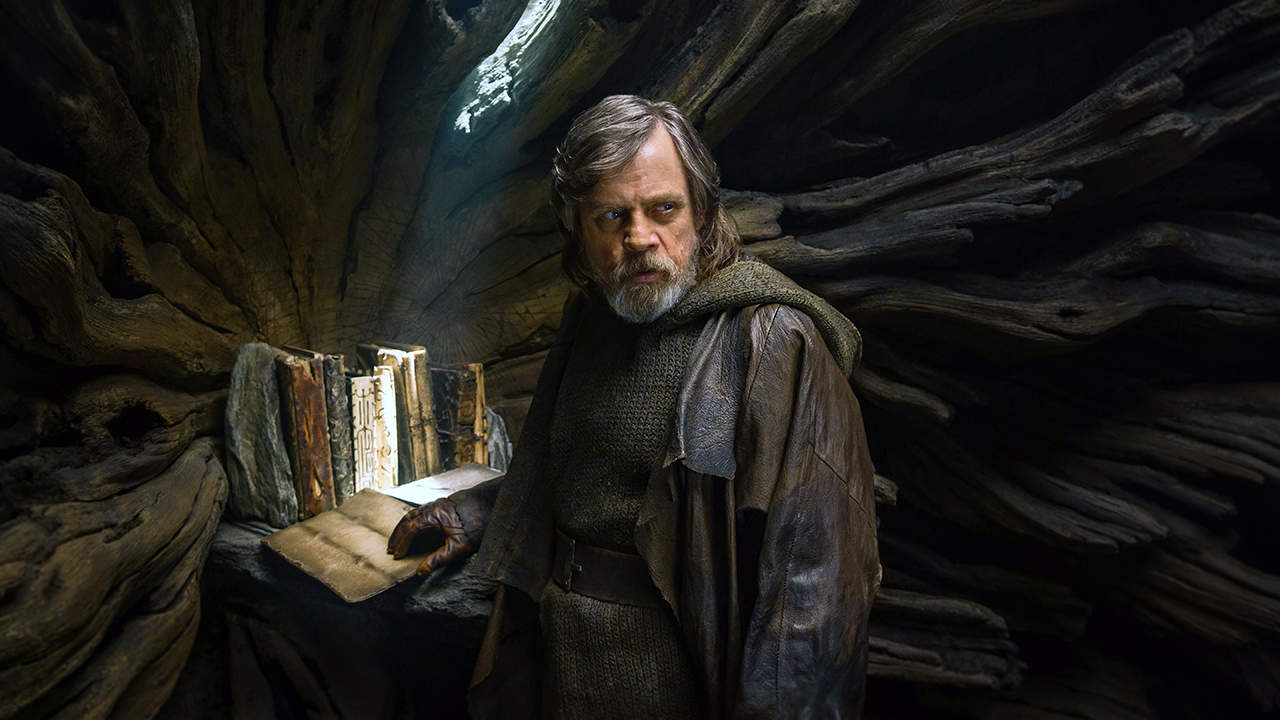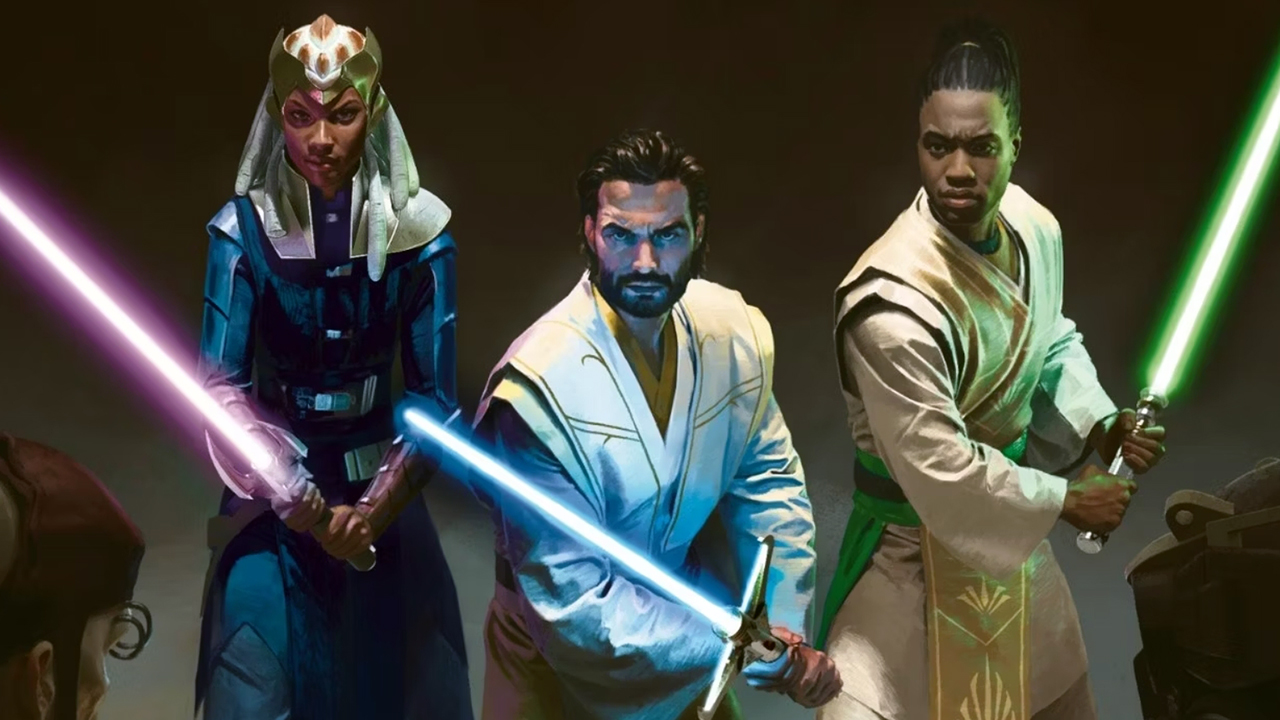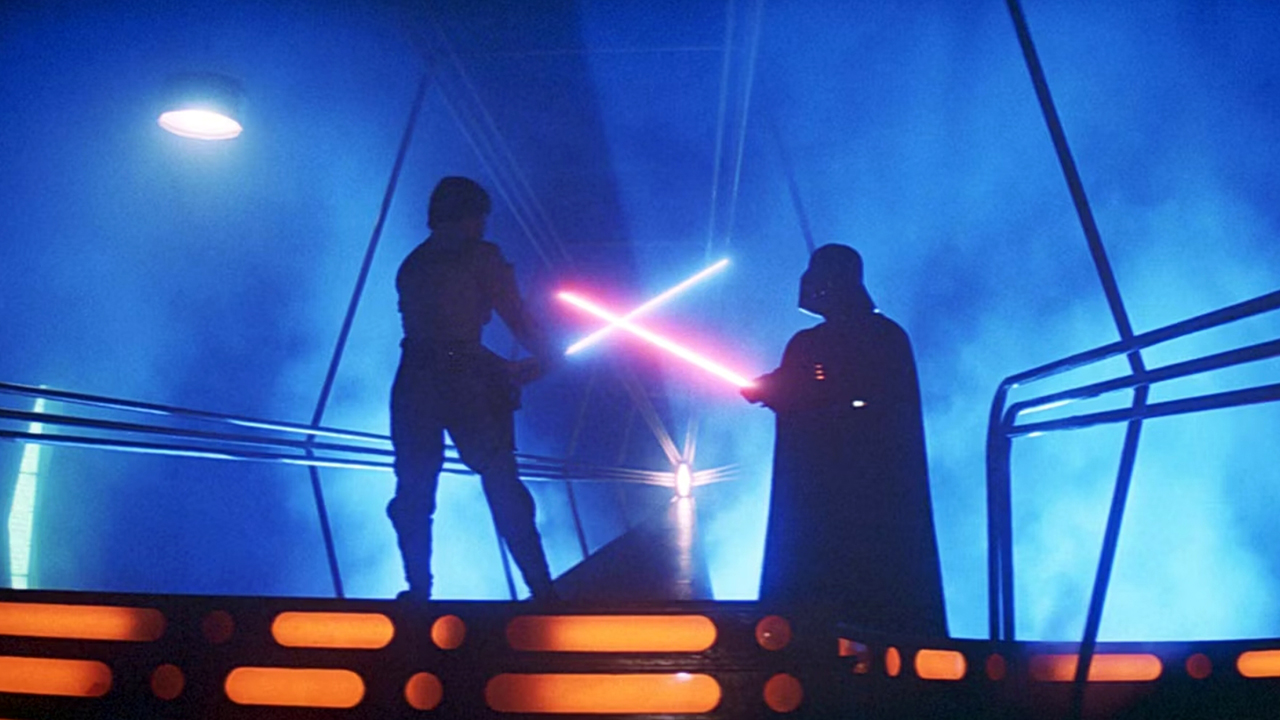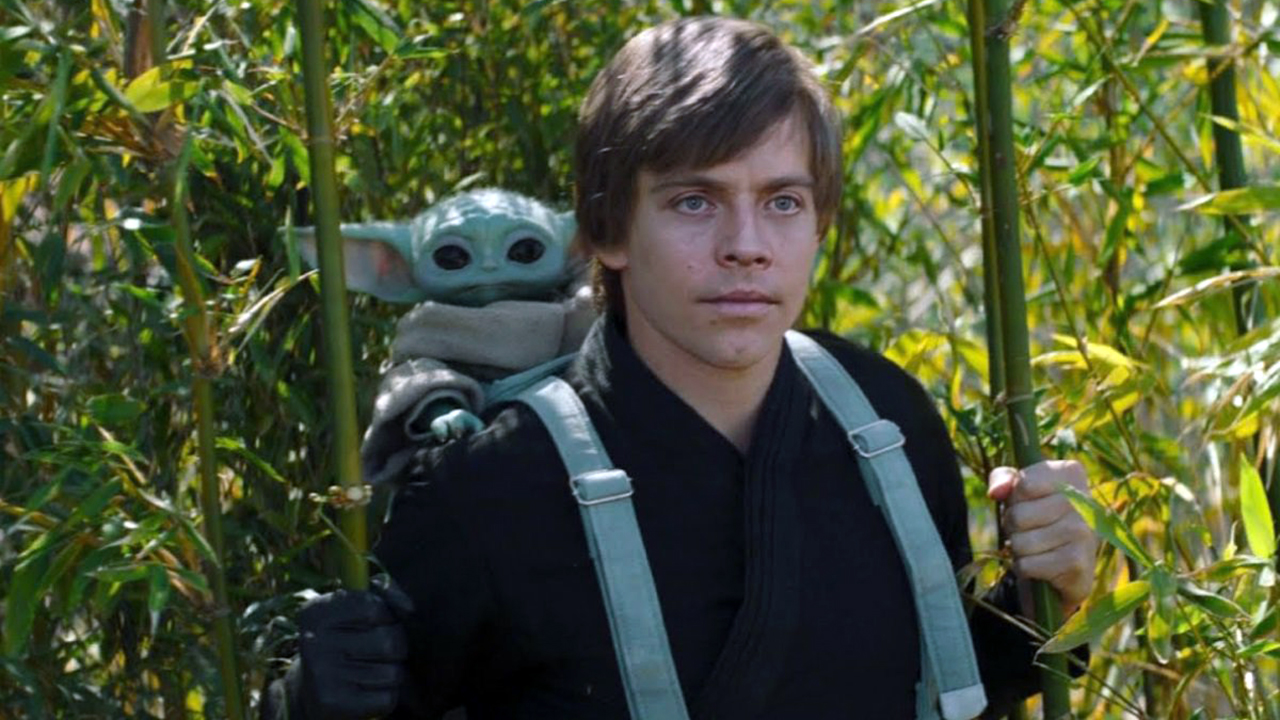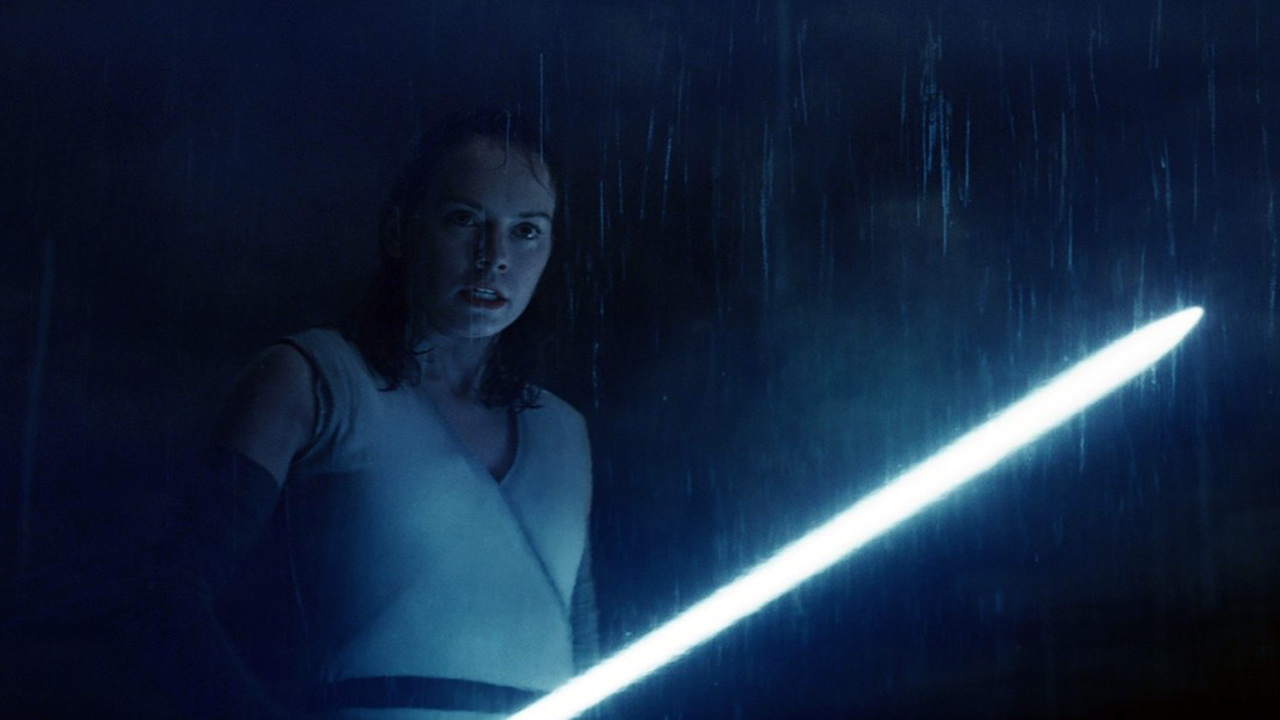The history of the Jedi Order in 'Star Wars'
All aboard this lightspeed tour of the history of the Jedi Order, the peacekeepers of the galaxy.
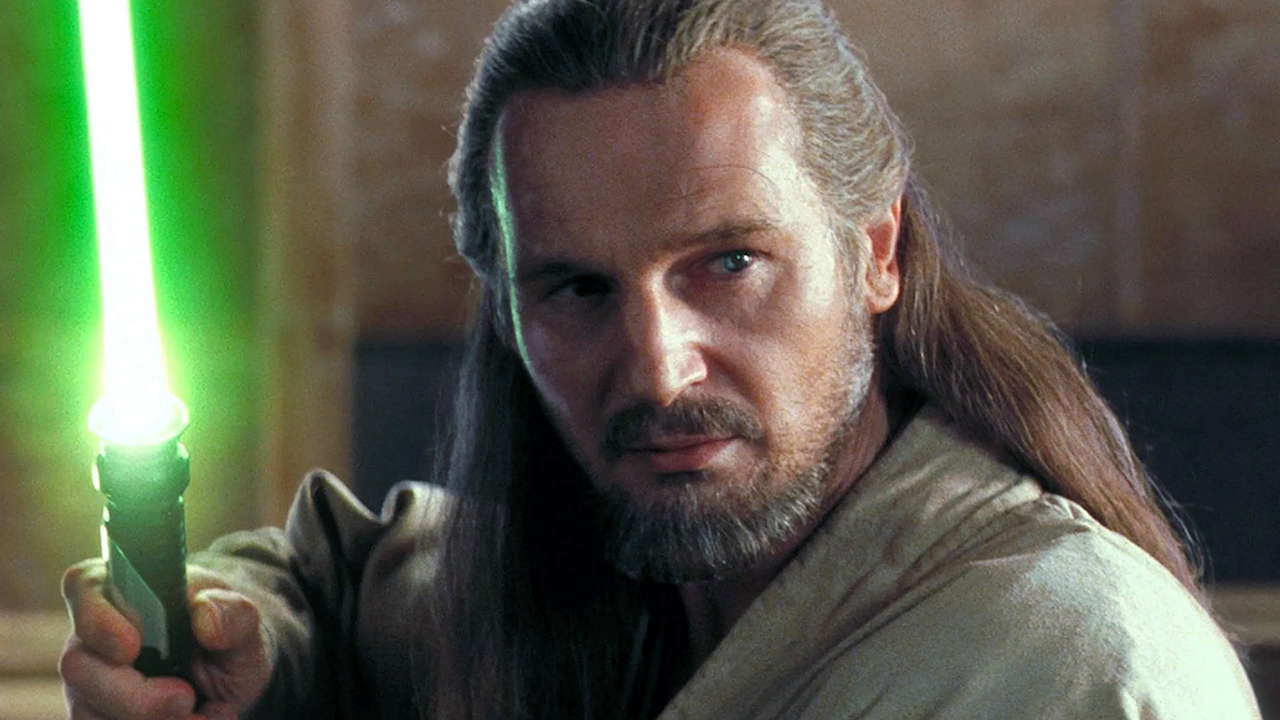
One of the core pillars of Star Wars is the Jedi and their mysterious connection to the Force, but we've only seen fragments of their illustrious order's history on the big screen. Watching the Star Wars movies in chronological order, we see them at the height of their power, fall into near extinction, and rise once again. Now, with the new live-action series The Acolyte on Disney Plus, we're about to learn how the Sith plotted in the shadows against the Jedi prior to the events of The Phantom Menace. Before the series arrives, here's the complete history of the Jedi Order.
Star Wars is especially interested in the fight between the forces of light and darkness across generations, and the history of both the Jedi and Sith Orders is long and often a bit difficult to follow. Therefore, we've decided to stick to the current Star Wars timeline canon to avoid any extra confusion and better tie into the ongoing storytelling being done through movies, TV, novels, comic books, and video games.
After The Acolyte and the animated mini-series Tales of the Empire, we're looking forward to Skeleton Crew on Disney Plus and The Mandalorian & Grogu in cinemas. Meanwhile, Star Wars Outlaws, which arrives later this year, promises to be the Star Wars open-world video game we'd always dreamed of.
Warning: Major Star Wars spoilers ahead!
Origins of the Jedi Order
The Jedi and their precursors, the Dai Bendu, came to exist way before the Sith cult, which was later created by an unnamed rogue Jedi who then declared war on their former comrades. In the far distant past, roughly 25,000 years BBY (Before the Battle of Yavin), the Prime Jedi founded the Jedi Order on the planet of Ahch-To. Legend suggests that the first-ever Jedi and other Force users used Force-imbued swords before lightsabers were invented.
However, it wasn't long before the first Jedi found the ice planet of Ilum, which was littered with kyber crystals, the 'heart' of all lightsabers. It soon became the Order's most sacred world and the base of operations for Professor Huyang, a droid who, for over a thousand years, instructed apprentices on lightsaber designs. Around the same time, the Order also spread to worlds such as Ossus, Jedha, Xenxiar, Tython, and even Coruscant.
The 'sacred texts' of the Jedi described the Order's tenets and history, as well as providing an introduction to the path of the Jedi across several volumes. That said, some elements found within those pages had little to no impact on later Jedi; those included references to 'gods' and the World Between Worlds that we later see Ahsoka Tano enter.
Breaking space news, the latest updates on rocket launches, skywatching events and more!
Around the year 20,000 BBY, a Jedi sect known as the Ordu Aspectu broke off from the main Order. Led by Rur and his second in command, Amon, their main goal was learning the secret to immortality. Unsurprisingly, this led to an open conflict between the Jedi Order and the Ordu Aspectu, though a peace treaty allowed them to continue their research. A later incident with a rogue artificial intelligence led to the self-destruction of the Ordu Aspectu, ending the cult forever.
The Jedi Order during Old Republic times
The Sith Order, which shares its name with a red-skinned alien species connected in special ways to the dark side of the Force, was firmly formed around 5,000 BBY by the aforementioned rogue Jedi. The early Sith wanted to explore the mysteries of the dark side of the Force, but also rejected many of the Jedi Order's key teachings.
The first open war between the two Orders ended with the Sith defeated, retreating to and colonizing the red world of Korriban, later known as Moraband. In the shadows, they rebuilt over generations and formed an Empire that would later strike against the Old Republic and their Jedi protectors.
Around this time, the Order also set up a new headquarters on Coruscant, a planet located roughly at the center of the known galaxy. Their temple on the planet would become the Order's main hub for thousands of generations. Unbeknownst to them, however, the ancient Sith shrine buried below it, thought to be 'neutralized' long ago, emanated dark side power that 'infiltrated' the space above and weakened the Jedi for millennia. Check out our article on the history of the Sith Order for more information on the Jedi's dark mirror.
During the Old Republic era, the Jedi Order also came into conflict against factions that threatened the Republic's ideals of peace and freedom. Their biggest enemies included the Zygerrian Slave Empire and the Mandalorians, who'd developed a warlike culture that threatened to devour the galaxy if left unchecked.
Later wars against the Sith Empire, who even managed to conquer Coruscant for a time, pushed the Jedi to adopt more aggressive lightsaber combat forms. While this was extremely effective, it also led many Jedi to the dark side. As a direct result, the Order was quick to ban their use after the fires of war were extinguished.
Towards the end of the Dark Age (defined by the seemingly endless battles against the Sith), the Old Republic's system faced an imminent collapse. Despite this the Jedi were able to defeat the Sith Empire after the latter was irreparably weakened by ill-timed infighting. After the Sith's definitive defeat on the planet Ruusan, only Darth Bane remained. The Sith Order's survival in the shadows under Darth Bane’s Rule of Two ("One master and one apprentice can be the only Sith in the galaxy at a time") would eventually lead to the Jedi's undoing.
The High Republic and the golden age of the Jedi
The modern Galactic Republic replaced the Old Republic around the year 1,000 BBY. This heralded a new era of peace, democracy, and prosperity under the steady rule of the Galactic Senate and its elected leader, the Supreme Chancellor. At this point, the Jedi fully embraced their role as the Republic's peacekeepers and guardians. The Galactic republic was at the height of its power from around 500 BBY to 100 BBY – a period known as the High Republic era.
The Jedi of this era were neither soldiers nor monk-like figures, instead serving as law enforcement agents that pursued dangerous criminals and often acted as detectives. The Jedi Order did eventually lose its firm grip on the galaxy's evildoers and rejected the idea of the Sith returning until it was too late. However, until then the High Republic was a period of relative peace and a lack of major galaxy-wide warfare.
Regardless, the Jedi were still involved in a number of notable conflicts, like the ones against the Path of the Open Hand cult – who wanted to 'free' the Force – or the Nihil marauders, and suffered heavy losses during certain battles and events that weakened the grand Order's position as the galaxy's first line of defense. This led to an internal debate within the Jedi Order that made some members question how involved with the Republic they should be.
The Fall of the Jedi and the Clones Wars
Prior to the Invasion of Naboo in the year 32 BBY, the Jedi Master Sifo-Dyas sought to create a Grand Army of the Republic after predicting a galactic conflict that would end the government as well as the Jedi Order. This led to his removal from the Council and him secretly commissioning an army of clone soldiers from the inhabitants of Kamino.
Unbeknownst to the Jedi Master, the Sith, who'd continued to plot and design the Jedi's downfall in the shadows for centuries and were now led by Darth Sidious, learned about his plan and had him killed by the Pyke Syndicate. Following the Battle of Naboo and the election of Sheev Palpatine – Sidious' public persona – as Chancellor, Count Dooku replaced Darth Maul as the Sith Lord's apprentice and became Darth Tyranus.
The Jedi wouldn't find out about the existence of a clone army until the Separatist Crisis (orchestrated by Darth Sidious) became a threat to the Republic's stability. It was the Jedi Master Obi-Wan Kenobi who learned about the clone army, although he only got half of the truth from the Kaminoans, as they'd also been tricked – the clone army were now designed by the Sith and 'rigged' to turn on the Jedi when the time came.
Concerned by the growing number of Separatist systems, the Senate, now steered by the Chancellor's evil designs, approved the Military Creation Act and deployed the clone army on Geonosis alongside a Jedi assault team led by Master Yoda and Mace Windu. The First Battle of Geonosis – launched against the Separatist leaders, Count Dooku/Tyranus, and their droid army – marked the beginning of the three-year-long Clone Wars, which broke the galaxy apart.
Out of necessity, the Jedi became generals and commanders once again, now leading a clone army against the Separatists, a coalition made up from worlds that had once been part of the Republic along with some supporting Outer Rim systems. Of course, many Jedi questioned their involvement in the war and its very nature, yet Sidious, Count Dooku/Darth Tyranus, and their allies managed to keep the 'show' going long enough to finalize their plans to take over the government and end the Jedi once and for all.
The Clone Wars ended in the year 19 BBY, when Count Dooku/Darth Tyranus was felled by Anakin Skywalker and General Grievous was destroyed by his Master, Obi-Wan Kenobi. This was all part of Darth Sidious' Grand Plan and led to the final phase: the activation of Order 66. This infamous directive saw the clone troopers turning on their Jedi leaders, and the creation of the Galactic Empire to 'reorganize' and ensure the security of the galaxy after a time of war and division.
The dark times and the Return of the Jedi
While some Jedi survivors escaped the purge and remained hidden away in remote worlds, Order 66 was largely a success and effectively destroyed the Jedi Order and most of its following. This paved the way for the Empire's unchecked expansion across the galaxy.
During the Reign of the Empire, Darth Sidious ruled as Emperor Palpatine with the help of Darth Vader, formerly Anakin Skywalker (the Chosen One according to some of the Jedi), as his right-hand man. Some Jedi who'd been captured were also twisted by the dark side and turned into Inquisitors who helped track down and kill the remaining Jedi until they were no longer useful to Palpatine and Vader.
Some persistent Jedi rebels survived, including Ahsoka Tano (Skywalker's former Padawan), Cal Kestis, and Kanan Jarrus, but they were scattered and alone, unable to bring down the Empire. Sidious' empire would ultimately fall at the hands of Luke Skywalker, Anakin Skywalker's secret son. Luke Skywalker was trained in the Jedi ways by Obi-Wan Kenobi, Anakin's old master, and joined the Rebel Alliance alongside his sister, Leia Organa.
Both Darth Sidious and Darth Vader tried to seduce Luke Skywalker into joining the Sith during the Battle of Endor, in the year 4 ABY (After the Battle of Yavin). Once again, infighting would be the downfall of the Sith Order, as each of them had their own plans to kill and replace the other. In the end, the young Jedi Luke Skywalker brought Darth Vader back into the light and reached Anakin. Before dying from grave injuries, Anakin saved his son Luke and ended Sidious' life aboard the second Death Star. The battle station was also destroyed by the Rebels, putting the Empire on the defensive.
New Republic era and the Last Jedi
Following the deaths of both Emperor Palpatine and Darth Vader, Imperial loyalists put up a fight against the Alliance that soon formed the New Republic, but ultimately failed to preserve the late Galactic Empire. Meanwhile, Luke Skywalker began to train his sister Leia as a Jedi. She went as far as constructing her own lightsaber, but declined further training after seeing a vision of her son's death, and instead chose to focus on building the New Republic.
At the same time, Ahsoka Tano commenced the training of the Mandalorian warrior and Rebel fighter Sabine Wren while searching for Ezra Bridger, a Jedi Padawan apprentice of Kanan Jarrus who had removed himself from the galaxy alongside Grand Admiral Thrawn. Bridger was found and returned to the galaxy alongside Thrawn and his new allies, while Tano and Wren were left behind. This specific tale has yet to be fully told, but Thrawn's attempt to restore the Empire likely led to the creation of the First Order.
Knowing his training was unorthodox, Luke aimed to give his New Jedi Order students a training regime similar to the one used during the Republic days. His Jedi temple and students on Ossus thrived. That was until around 28 ABY, when Ben Solo, son of Leia and Han Solo, was seduced to the dark side by Supreme Leader Snoke. Ben’s descent into darkness culminated with the destruction of the Jedi Temple and the slaughter of the Jedi training there after Luke confronted him. This failure set Skywalker on a path of shame and regret.
Ben Solo rose to lead the dark side fanatics known as the Knights of Ren, forging an alliance with Snoke, who'd been pulling the strings of the First Order. This new order was a fascist organization that rose from the ashes of the Empire after amassing power deep within the Unknown Regions of space. Ben took on the new moniker of Kylo Ren at this time. Meanwhile, Luke turned his back on the galaxy and exiled himself in the first Jedi temple on Ahch-To, leaving only a cryptic star map behind to give away his whereabouts.
The First Order launched an attack on the New Republic and effectively neutralized its military power. At the same time, a scavenger from Jakku, called Rey, came across the lightsaber that Luke lost on Bespin after fighting Darth Vader, and ended up joining the Resistance. Leia later sent the Force-sensitive girl to find Luke on Ahch-To after the star map was completed. There, she started to pull the old Jedi Master out of his pit of despair, and eventually underwent Jedi training.
Rey's training and temporary alliance with a conflicted Kylo Ren led to the death of Snoke, yet the Resistance almost perished on Crait when Ren assaulted the base. Only the timely intervention of Luke Skywalker saved the day, when he used all the energy he had to Force-project himself across the galaxy from Ahch-To and confront his nephew. This bought Rey and the Resistance enough time to escape and resulted in Luke passing away and becoming a Force Ghost, as well as a symbol of resistance and hope in the galaxy.
Roughly a year after the Battle of Crait, it was revealed that a secret Sith cult known as the Sith Eternal had managed to clone Darth Sidious' body on the ancient Sith planet of Exegol, transferring his lingering spirit into it. This shadowy group was also revealed to be behind Snoke's creation. The Sith fleet absorbed what remained of the unsuspecting First Order and launched an all-out attack against the galaxy to try to establish a new Sith Empire.
Rey, after learning she was the lost 'granddaughter' of the phantom Emperor, confronted Sidious and destroyed him with the help of the Jedi who came before her. At the same time, a civilian uprising across the galaxy countered the Sith Eternal's offensive. Ben Solo, brought back to the light by Rey, was key to defeating Sidious and ended up sacrificing himself to save Rey from certain death.
After burying Luke and Leia's lightsabers on Tatooine, the desert homeworld of the Skywalkers, Rey adopted their surname and set out to finally restore the Jedi Order without the shadows of the Sith looming over her.
Fran Ruiz is our resident Star Wars guy. His hunger for movies and TV series is only matched by his love for video games. He got a BA of English Studies, focusing on English Literature, from the University of Malaga, in Spain, as well as a Master's Degree in English Studies, Multilingual and Intercultural Communication. On top of writing features and other longform articles for Space.com since 2021, he is a frequent collaborator of VG247 and other gaming sites. He also serves as associate editor over at Star Wars News Net and its sister site, Movie News Net.
